Description
The instruction for medical use
of Zoviraks® medicine
the Trade name
of the drug Zoviraks®
the International unlicensed
name Acyclovir Dosage Form
of the Tablet, 200 mg
Structure
One tablet contains
active agent – acyclovir of 200 mg,
excipients: lactoses monohydrate, cellulose microcrystalline, sodium of starch glikolit, K30 povidone, magnesium stearate.
The description
of the Tablet of white color, round biconvex shape, with the marking GX CL3 on one party and smooth on the other hand.
Pharmacotherapeutic group
Antiviral drugs for system use. Antiviral drugs of direct action. Nucleosides and nucleotides. Acyclovir.
The ATX J05AB01 code
the Pharmacological
Pharmacokinetics Acyclovir properties is only partially absorbed from intestines. After reception of 200 mg of acyclovir each 4 hours average maximum equilibrium concentration in plasma (Cmax) sostavlt 3.1 µmol (0.7 mkg/ml), and average equilibrium minimum concentration in plasma (Cmin) – 1.8 µmol (0.4 mkg/ml). At reception of 400 mg and 800 mg of acyclovir 5.3 µmol (1.2 mkg/ml) and 8 µmol (1.8 mkg/ml) respectively, and Cmin – 2.7 µmol (0.6 mkg/ml) and 4 µmol (0.9 mkg/ml) respectively make each 4 hours of Cmax.
Concentration of acyclovir in cerebrospinal fluid makes about 50% of its plasma concentration.
Elimination half-life of acyclovir about 2.9 hours. The most part of drug is removed by kidneys in not changed look. The renal clearance of acyclovir considerably exceeds clearance of creatinine that demonstrates removal of acyclovir not only by means of glomerular filtration, but also canalicular secretion. The main metabolite of acyclovir is 9-karboksimetoksi-methylguanine to which share in urine about 10-15% of the entered drug dose fall.
At elderly people the clearance of acyclovir decreases in parallel with decrease in clearance of creatinine with age, however elimination half-life of acyclovir changes slightly.
At patients with chronic kidney disease the elimination half-life of acyclovir averaged 19.5 h. When carrying out a hemodialysis the average elimination half-life of acyclovir was 5.7 h, and concentration of acyclovir in plasma decreased approximately by 60%.
Levels of cerebrospinal fluid are about 50% of appropriate levels in plasma. Acyclovir in insignificant degree contacts proteins of blood plasma (9-33%).
The pharmacodynamics
of Zoviraks® is a synthetic analog of a purine nucleoside which has ability to inhibit in vitro and in vivo replication of viruses of herpes of the person, including a virus of a herpes simplex (HSV) of the 1st and 2nd types, a virus of chicken pox and the surrounding herpes (VZV), Epstein-Barre’s (EBV) virus and a cytomegalovirus (CMV).
The inhibiting activity of acyclovir concerning the HSV-1, HSV-2, VZV, EBV and CMV viruses is characterized by high selectivity.
Зовиракс® is not substrate for enzyme of a thymidinekinase of not infected cells therefore it is a little toxic for the owner’s cells. The thymidinekinase of the cells infected with the HSV, VZV, EBV and CMV viruses turns acyclovir in acyclovir monophosphate – an analog of a nucleoside which then consistently turns into diphosphate and triphosphate under the influence of cellular enzymes. Triphosphate acyclovir inclusion in a chain of virus DNA and the subsequent break of a chain block further replication of virus DNA.
At patients with the expressed immunodeficiency the long or repeated courses of therapy by acyclovir can lead to formation of resistant strains and therefore further treatment of Zoviraksom® can be inefficient. At the majority of the allocated strains with hyposensitivity to Zoviraksu® rather low maintenance of a virus thymidinekinase, disturbance of structure of a virus thymidinekinase or DNA polymerase was noted. Impact of Zoviraksa® on strains of HSV in vitro can also lead to formation of strains, less sensitive to it. The correlation between sensitivity of strains of HSV to Zoviraksu® in vitro and clinical performance of drug is not established.
All patients should be careful to avoid potential transfer of a virus, especially in the presence of active defeats.
Indications
– treatment of infections of skin and the mucous membranes caused by a herpes simplex virus including primary and recurrent genital herpes (except for a herpes simplex virus at the newborn and heavy infections caused by a herpes simplex virus in children with an immunodeficiency)
– prevention of a recurrence of the infections caused by a herpes simplex virus at patients with the normal immune status
are prevention of the infections caused by a herpes simplex virus, patients with an immunodeficiency
have a treatment of chicken pox and the surrounding herpes
the Route of administration and doses
For intake.
Зовиракс® a pill can be taken at meal time as meal does not break substantially its absorption. Tablets can be dissolved in 50 ml of water, or to swallow entirely, washing down with a full glass of water. The patients accepting high doses of Zoviraksa® inside have to receive enough liquid.
Adults
Treatment of the infections caused by a herpes simplex virus
For treatment of the infections caused by a herpes simplex virus the recommended dose of Zoviraksa® makes on 200 mg (1 tablet) of 5 times in every day 4 hours, except for night time. Usually the course of treatment makes 5 days, but can be prolonged in heavy primary infections.
In case of the expressed immunodeficiency (for example, after bone marrow transplantation) or at disturbance of absorption from intestines the dose of Zoviraksa® can be increased up to 400 mg (2 tablets) of 5 times a day or the possibility of intravenous administration is considered. Treatment needs to be begun as soon as possible after developing of an infection, at a recurrence it is already recommended to appoint drug in a prodromal stage or at emergence of the first elements of rash.
Prevention of a recurrence of the infections caused by a herpes simplex virus with the normal immune status
For prevention of a recurrence of the infections caused by a herpes simplex virus the recommended dose of Zoviraksa® makes on 200 mg 4 times a day (each 6 hours).
Many patients suit more convenient scheme of therapy on 400 mg 2 times a day (each 12 hours).
In some cases there are effective lower doses of Zoviraksa® on 200 mg 3 times a day (each 8 hours) or 2 times a day (each 12 hours).
At some patients the interruption of an infection can happen at reception of a total daily dose of 800 mg.
Treatment of Zoviraksom® should be interrupted periodically for 6-12 months for identification of possible changes during a disease.
Prevention of the infections caused by a herpes simplex virus in patients with an immunodeficiency
For prevention of the infections caused by a herpes simplex virus at patients with an immunodeficiency the recommended dose of Zoviraksa® makes on 200 mg 4 times a day (each 6 hours).
In case of the expressed immunodeficiency (for example, after bone marrow transplantation) or at disturbance of absorption from intestines the dose of Zoviraksa® for intake can be increased up to 400 mg of 5 times a day or the possibility of intravenous administration is considered. Duration of a preventive course of therapy is defined by the period duration when there is a risk of infection.
The recommended dose of Zoviraksa® makes treatment of chicken pox and the surrounding herpes For treatment of chicken pox and the surrounding herpes on 800 mg (4 tablets) of 5 times a day, the drug is taken by each 4 hours, except for night time. The course of treatment makes 7 days.
For treatment of patients with the expressed immunodeficiency (including the patients who transferred bone marrow transplantation) or at patients with disturbance of absorption the intravenous administration of Zoviraksa® is recommended to take into account.
It is necessary to appoint drug as soon as possible after the beginning of an infection. What will begin treatment of shingles after developing of rash earlier, especially effective it will be.
Treatment of chicken pox at immunocompetent patients is recommended to be begun within 24 hours from the moment of emergence of the first elements of rash.
Children
Treatment of the infections caused by a herpes simplex virus
– children are more senior than 6 years:
On 200 mg (1 tablet) of 4 times a day (each 4 hours), except for the period of night sleep. The course of treatment makes 5 days.
Prevention of the infections caused by a herpes simplex virus in children with an immunodeficiency
– children is more senior than 6 years:
On 200 mg 4 times a day (each 6 hours).
For treatment of neonatal infections of a virus of herpes the intravenous administration of acyclovir is recommended.
Treatment of chicken pox
– children is more senior than 6 years: 800 mg accepted 4 times a day
More precisely a dose can be defined at the rate of 20 mg/kg of body weight (but no more than 800 mg) 4 times a day. The course of treatment makes 5 days.
Prevention of a recurrence of the infections caused by a virus of a herpes simplex and treatment of the surrounding herpes at children with normal indicators of immunity
Data are absent.
Patients of advanced age
At advanced age there is a decrease in clearance of acyclovir in an organism to decrease in clearance of creatinine.
Patients of advanced age have to receive enough liquid against the background of reception of high doses of Zoviraksa® inside, in a renal failure at them it is necessary to resolve an issue of a dose decline of Zoviraksa®.
Patients with a renal failure
At patients with a renal failure the reception of Zoviraksa® inside in the recommended doses for the purpose of treatment and prevention of the infections caused by a herpes simplex virus does not lead to cumulation of drug to the concentration exceeding the established safe levels. However, at patients with the profound renal failure (clearance of creatinine less than 10 ml/min.) about 200 mg (1 tablet) 2 times a day (each 12 hours) are recommended to reduce a dose of Zoviraksa®.
At treatment of chicken pox, the surrounding herpes and also at treatment of patients with the expressed immunodeficiency the recommended doses of Zoviraksa® make:
– heavy renal failure (clearance of creatinine less than 10 ml/min.): 800 mg (4 tablets) 2 times in every day of 12 hours,
– a moderate renal failure (clearance of creatinine of 10-25 ml/min.): 800 mg (4 tablets) 3 times in every day of 8 hours.
Side effects
the categories of frequency of emergence of the undesirable phenomena Given below have estimated character. Occurrences, these, necessary for determination of frequency, are not available to the majority of the phenomena. Besides, the frequency of occurrence of the undesirable phenomena can vary depending on indications.
Very often (& gt, 1/10), it is frequent (& gt, 1/100, & lt, 1/10), infrequently (& gt, 1/1.000, & lt, 1/100), is rare (& gt, 1/10.000, & lt, 1/1.000), is very rare (& lt, 1/10.000). These by-effects are expressed generally at patients with a renal failure.
Often
– a headache, dizziness
– nausea, vomiting, diarrhea, an abdominal pain
– an itching, rash, including a photosensitization
– fast fatigue, temperature increase
Infrequently
– a small tortoiseshell
– a fast diffusion hair loss. Communication with administration of drug of Zoviraks® is not proved, is associated with multiple variations of a course of the disease and a large amount of the used drugs more often.
Seldom
– an asthma
– a Quincke’s disease, a Quincke’s edema
– reversible increase in level of bilirubin and enzymes of a liver
– increase in concentration of urea and creatinine in blood
– an anaphylaxis, anaphylactic reactions
Very seldom
– anemia, a leukopenia and thrombocytopenia
– hepatitis, jaundice
– an acute renal failure, renal pains
– excitement, confusion of consciousness, alarm, confusion, a tremor, an ataxy, a dysarthtia, hallucinations, psychotic symptoms, convulsions, drowsiness, encephalopathy, a coma
These symptoms are reversible and are usually observed at patients with a renal failure or other contributing factors.
Contraindications
– hypersensitivity
– a hereditary lactose intolerance or hereditary insufficiency of lactase, malabsorption of a glucose/galactose
– children’s age up to 6 years
Zoviraks® should be applied to acyclovir or a valatsiklovir with care in dehydration and a renal failure.
Medicinal interactions
No clinically significant medicinal interactions at use of Zoviraksa® were noted.
Acyclovir is removed in not changed view with urine by active canalicular secretion. All drugs with a similar way of removal can increase plasma concentration of acyclovir. Cimetidinum, being inhibitor of microsomal oxidation, increases AUC indicator (the area under a curve concentration in plasma – time) acyclovir, reduces its renal clearance and increases plasma concentration. Increase in AUC blood plasma for acyclovir and an inactive metabolite of the mikofenolat of a mofetil, the immunosuppressant which is applied in transplantology was noted at simultaneous use of both drugs. However dose adjustment is not required owing to the wide range of therapeutic doses of Zoviraksa®.
When prescribing acyclovir in 1 h after reception of 1 g of a probenetsid, elimination half-life of acyclovir and the area under a curve concentration in plasma – time increased by 18 and 40% respectively.
At simultaneous administration of acyclovir and a zidovudine to HIV-positive patients pharmacokinetic characteristics of both drugs practically did not change.
The pilot study at five male patients indicates that the combined therapy with acyclovir increases AUC of completely accepted theophylline approximately by 50%. It is recommended to measure concentration in plasma during the combined therapy with acyclovir.
Special instructions
Use for patients with a renal failure and also at patients of advanced age
Acyclovir is removed by renal clearance therefore at patients with a renal failure the dose decline is necessary. Patients of advanced age have an increased probability of depression of function of kidneys therefore in this group of patients it is necessary to consider the possibility of a dose decline. Both patients of advanced age, and patients with a renal failure are in risk group of development of neurologic side effects and demand careful observation regarding signs of these effects. In the registered cases these reactions, as a rule, were reversible after the treatment termination.
Liquid loss completion: the patients accepting high oral doses of acyclovir need to accept enough liquid.
The risk of a renal failure increases when using along with other nephrotoxic drugs.
The fertility
Information on influence of acyclovir on female fertility at the person is absent. In a research with participation of 20 male patients with normal number of spermatozoa it was shown that intake of Zoviraksa® in doses up to 1 g a day during the period up to 6 months has no clinically significant impact on number of spermatozoa, their mobility or morphology.
Pregnancy
the Analysis of treatment of Zoviraksom® of women during pregnancy did not reveal increase in number of congenital defects at their children in comparison with the general population.
However, women should be careful when assigning Zoviraksa® during pregnancy. The possibility of use of acyclovir should be considered only if the potential advantage exceeds the probability of unknown risks.
The lactation period
After reception of Zoviraksa® inside in a dose of 200 mg (1 tablet) of 5 times a day acyclovir was defined in breast milk in concentration, components 0.6-4.1 from plasma concentration. At such concentration in breast milk the children who are on breastfeeding can receive acyclovir in a dose to 0.3 mg/kg/days. Considering it, it is recommended to be careful at use of acyclovir for the feeding women.
The feature of influence of medicine on ability to run the vehicle or potentially dangerous mechanisms
Should be careful at control of vehicles or other mechanisms.
Overdose
Symptoms: at single reception of high doses of Zoviraksa® (up to 20 g) development of toxic effects on an organism is not observed. However at the repeating use of drug in high doses within several days the development of disturbances from digestive tract (nausea, vomiting) is possible and from nervous system (headache, confusion of consciousness).
Treatment: symptomatic, careful medical observation for the purpose of identification of possible symptoms of intoxication, a hemodialysis.
The form of release and packing
On 5 tablets place in blister strip packaging from a film of PVH/PVDH and aluminum foil. On 5 planimetric packs together with the instruction for medical use in the state and Russian languages place in a pack cardboard.
To Store storage conditions at a temperature not above 25 °C
to Store out of children’s reach!
Not to use a period of storage of 5 years after expiry date
Prescription status
According to the prescription
the Producer Glakso S Welkom. And., Spain
(Avenida Extremadura 3, 09400 Aranda de Duero, Burgos)
the Packer S.A. GlaksoSmitKlyayn Pharmasyyutikalz, Poland (Grunwaldzka 189, 60-322 Poznań)
the Owner of the registration certificate
GlaksoSmitKlyayn Export of Ltd., Great Britain
(980 Great West Road, Brentford, Middlesex, TW8 9GS, United Kingdom)
Zovirax is the registered trade mark
of GlaksoSmitKlyayn Adres group of companies of the organization accepting in the territory of the Republic of Kazakhstan claims from consumers on quality of the products (goods) and responsible for post-registration observation of safety medicinal a sredstvapredstavitelstvo of the GlaksoSmitKlyayn Export Ltd company in Kazakhstane050059, Almaty, Furmanov St., 273 Phone number: +7 727 258 28 92, +7 727 259 09 96 Fax number: + 7 727 258 28 90 E-mail address:
To Develop kaz.med@gsk.com
Additional information
| Ingredient |
|---|





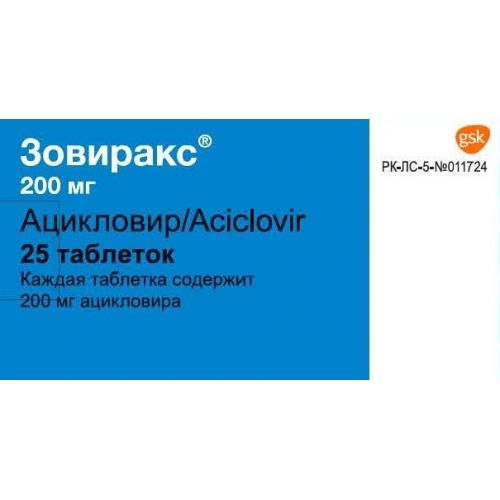
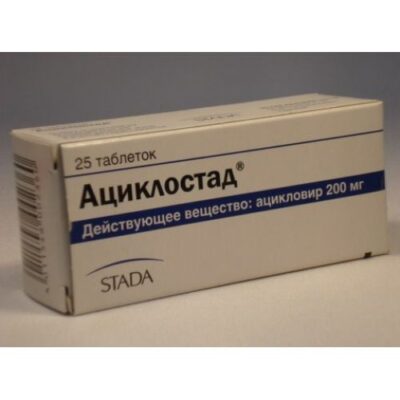
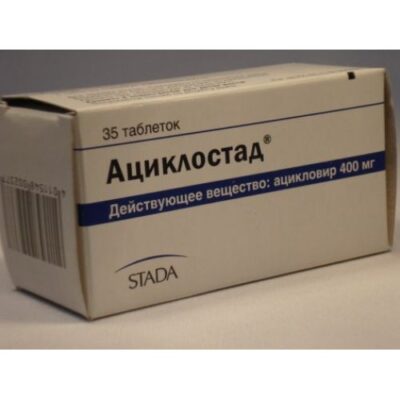
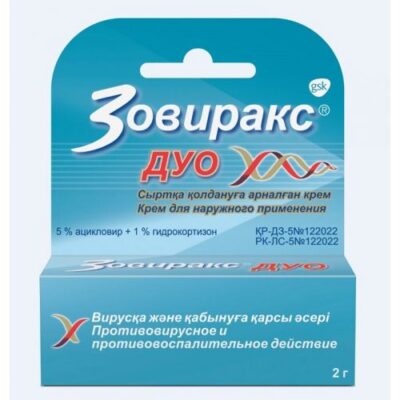
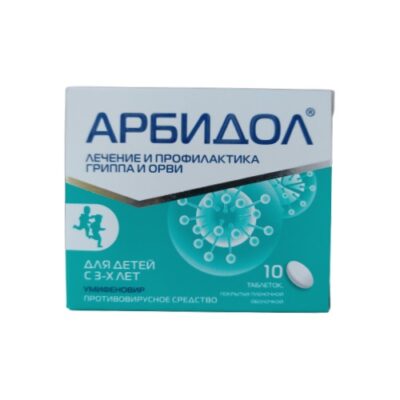
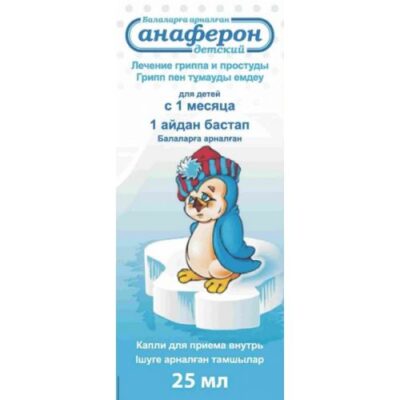
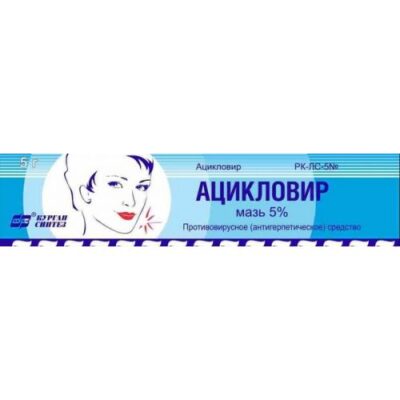
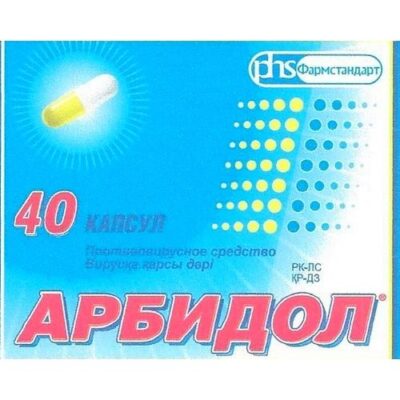
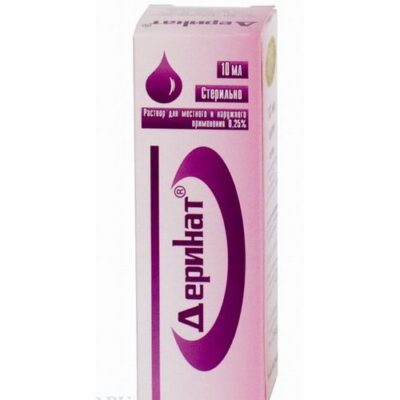
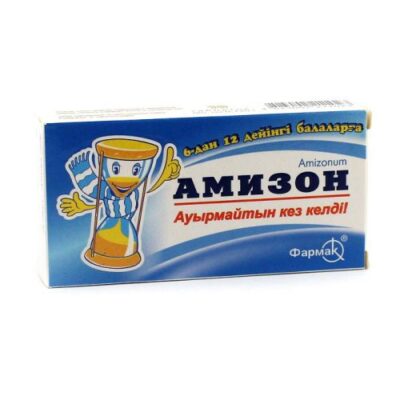
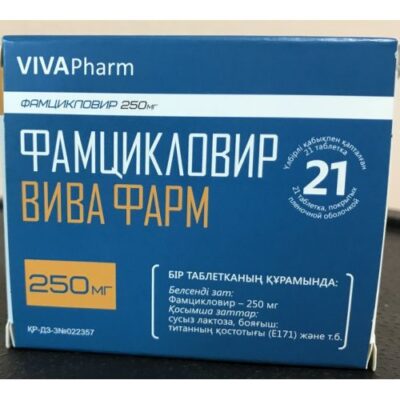






Reviews
There are no reviews yet.